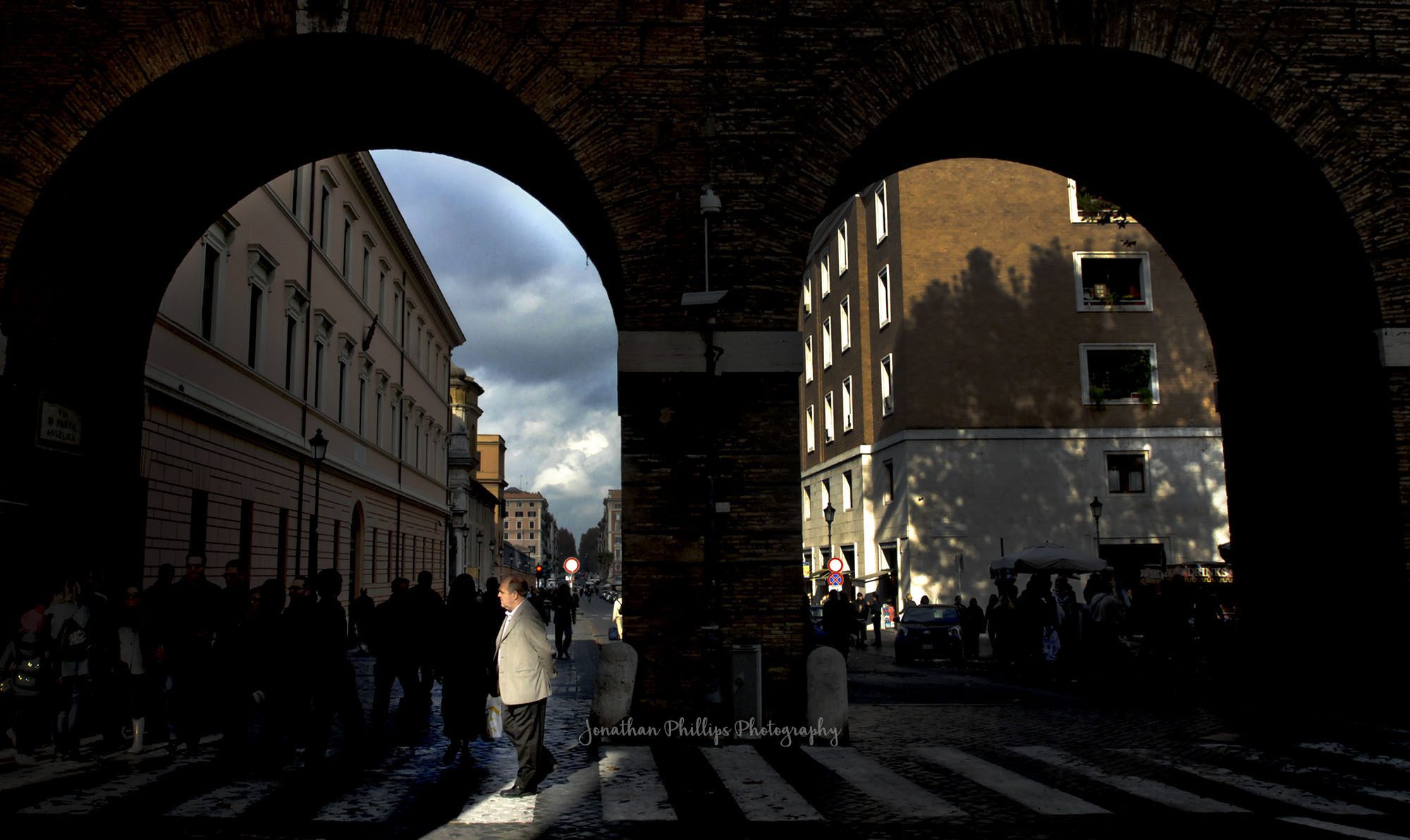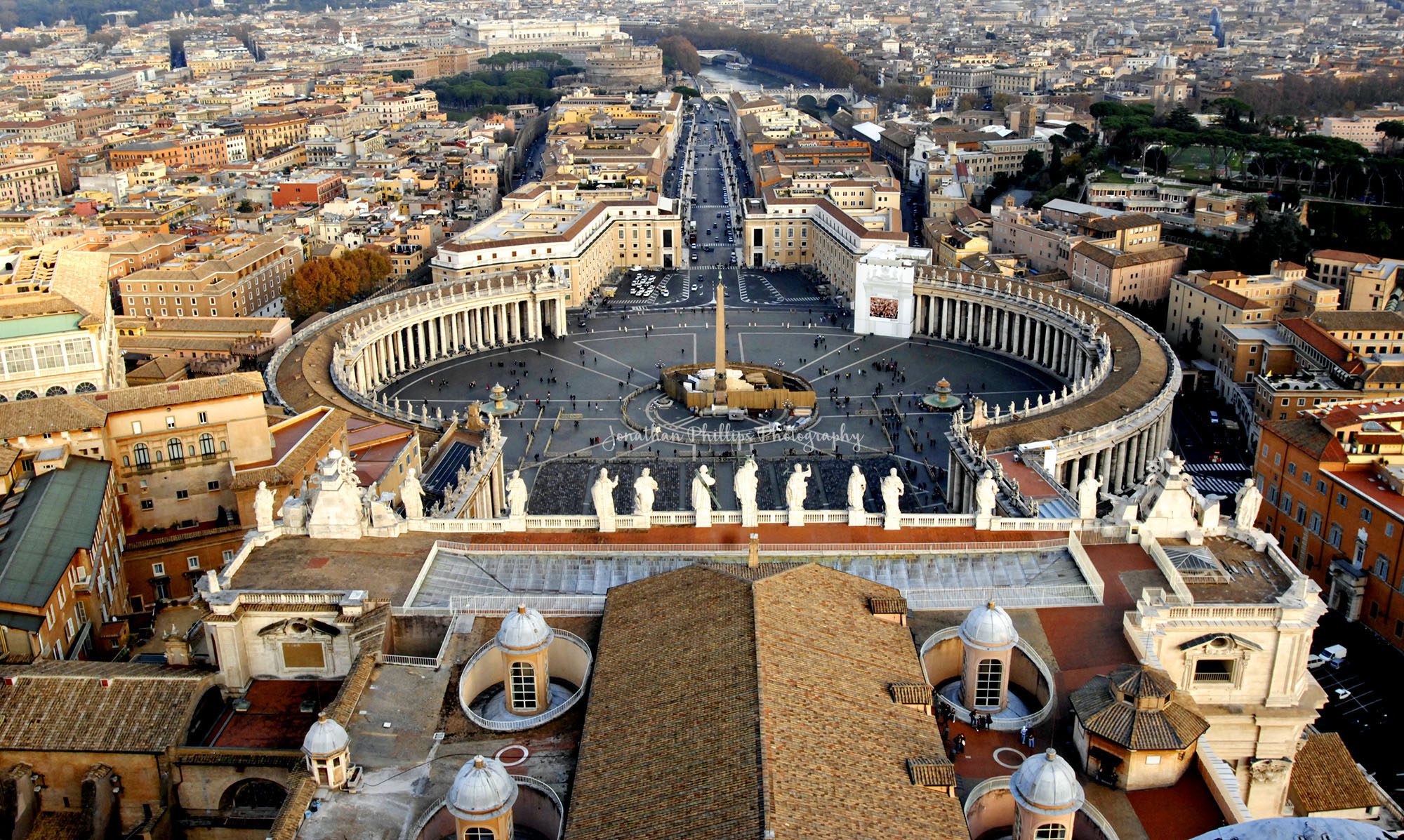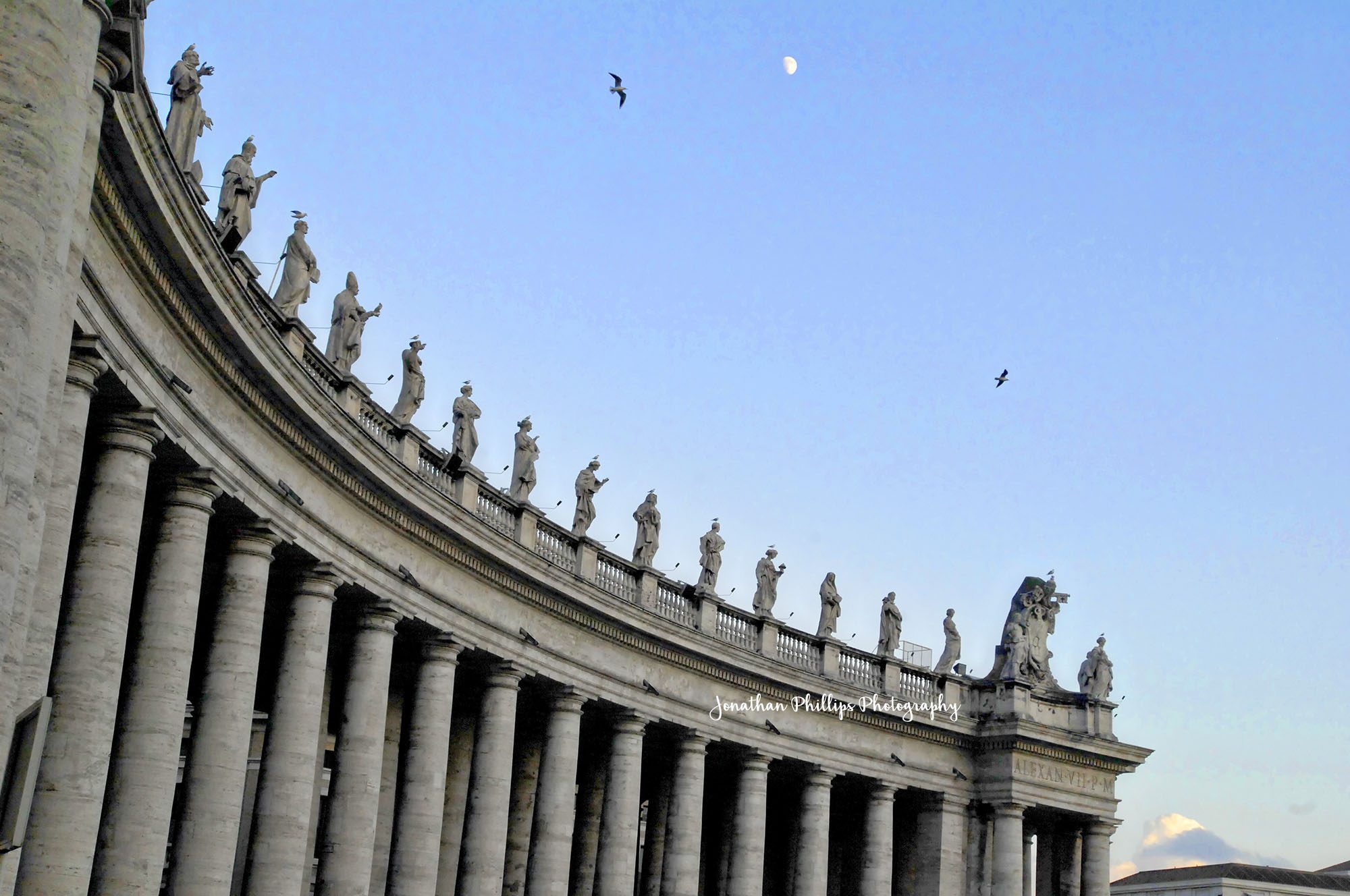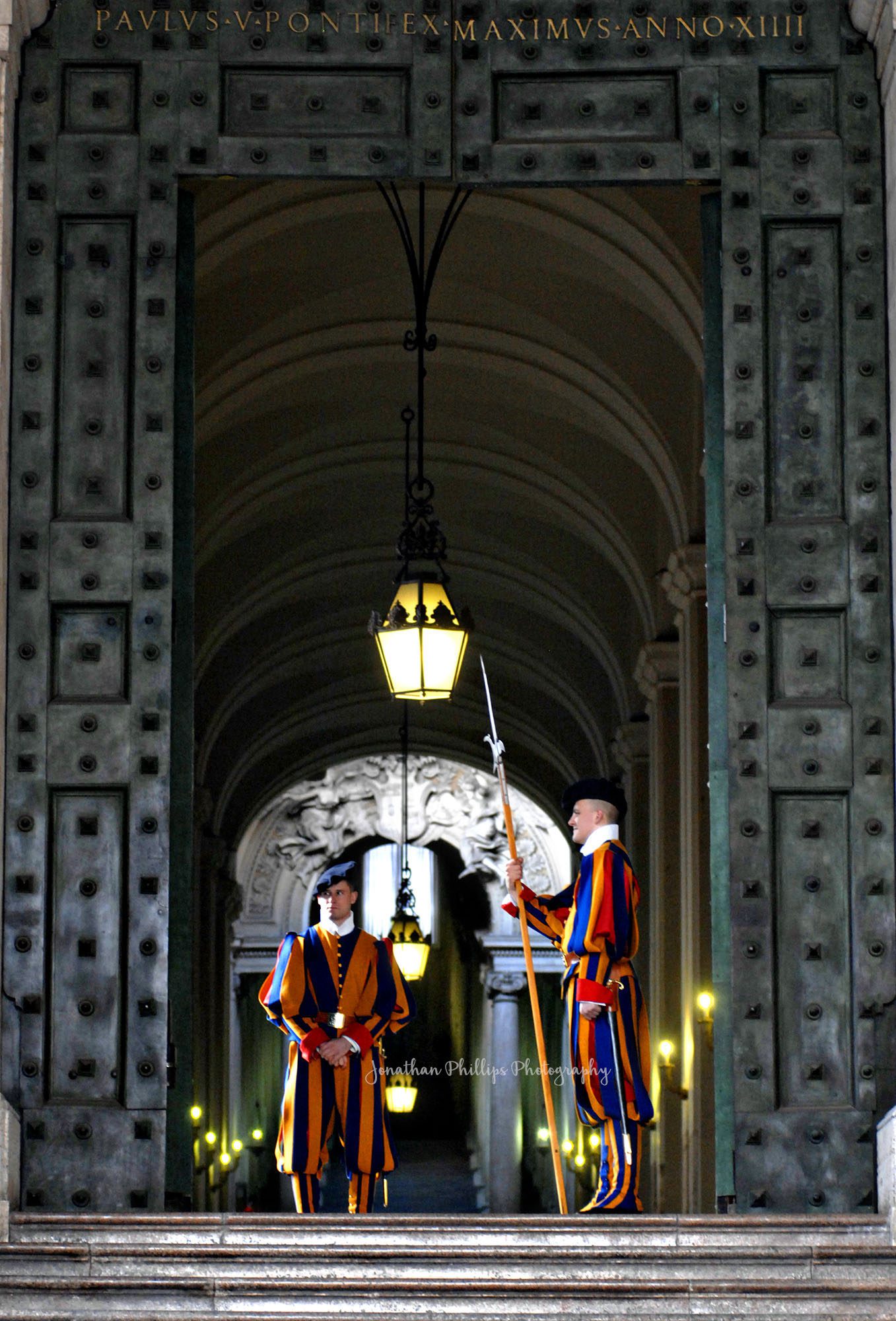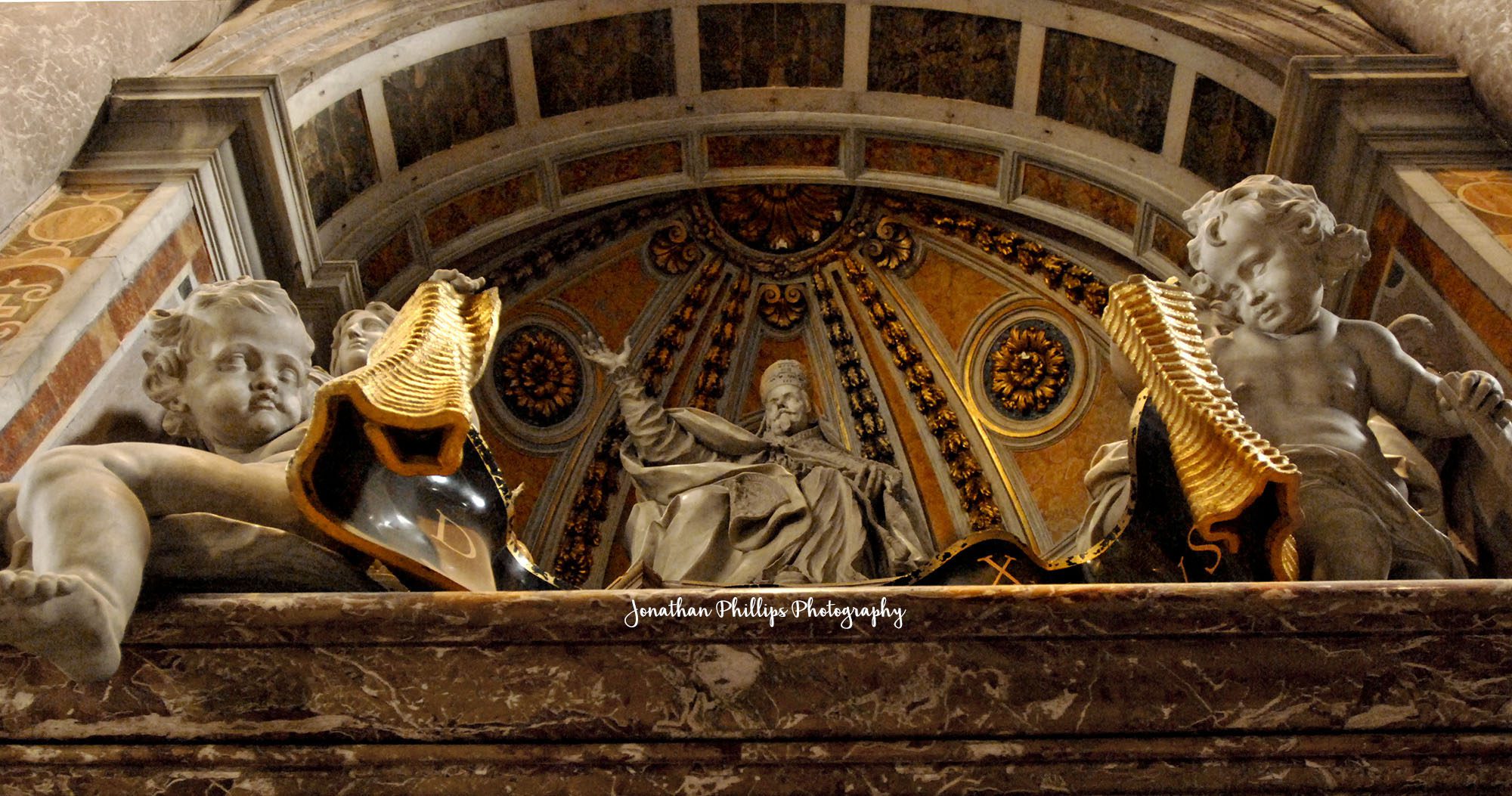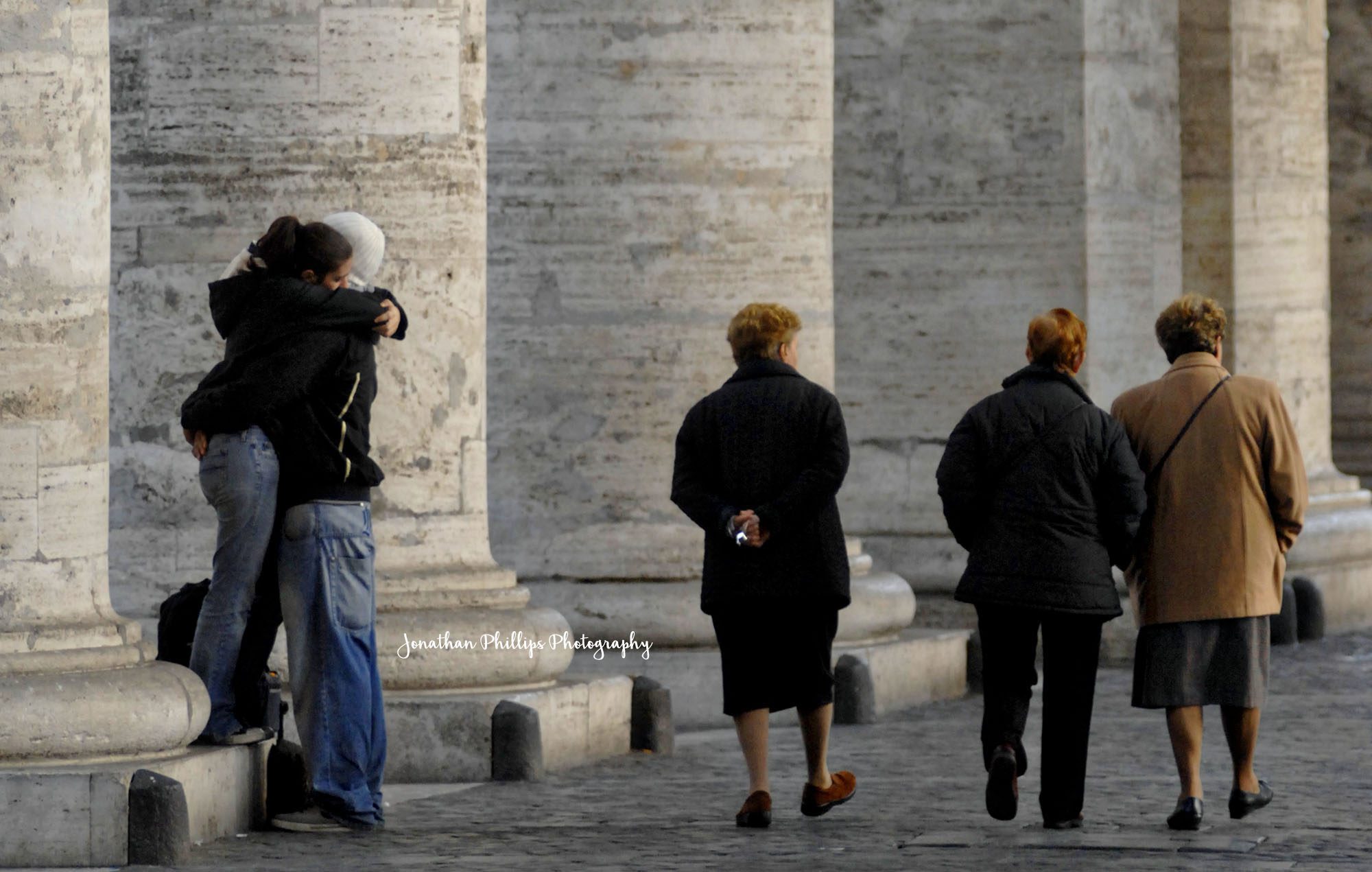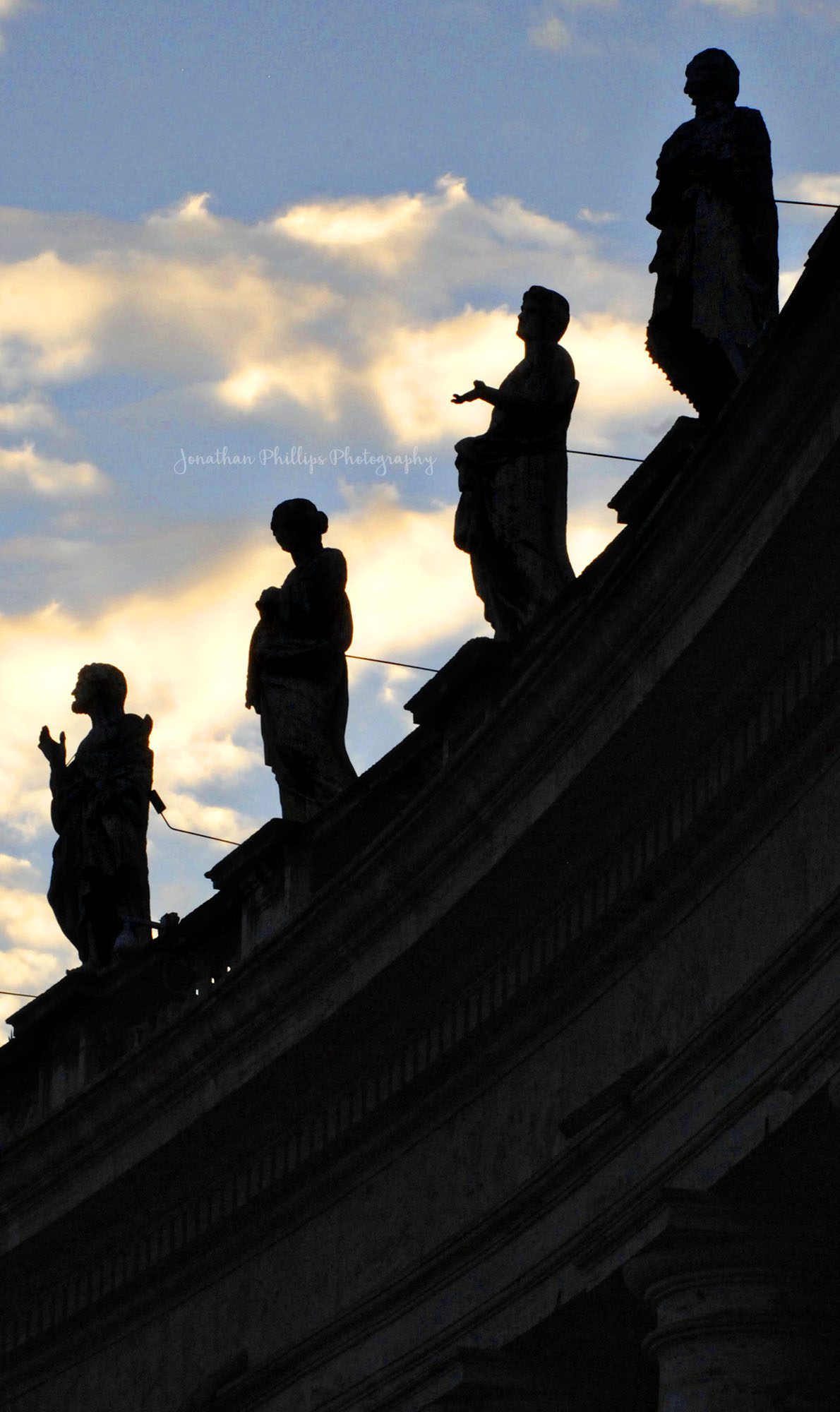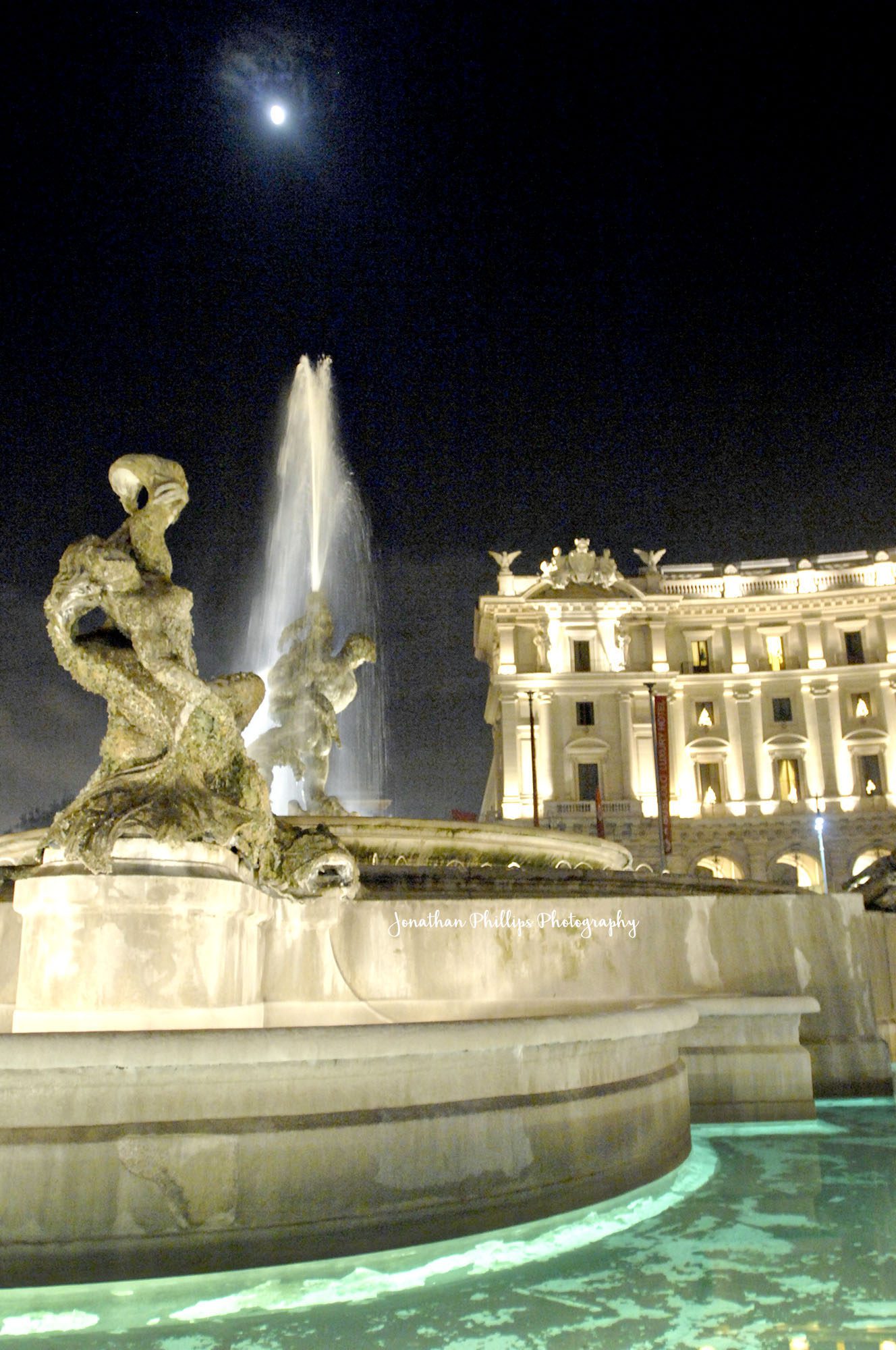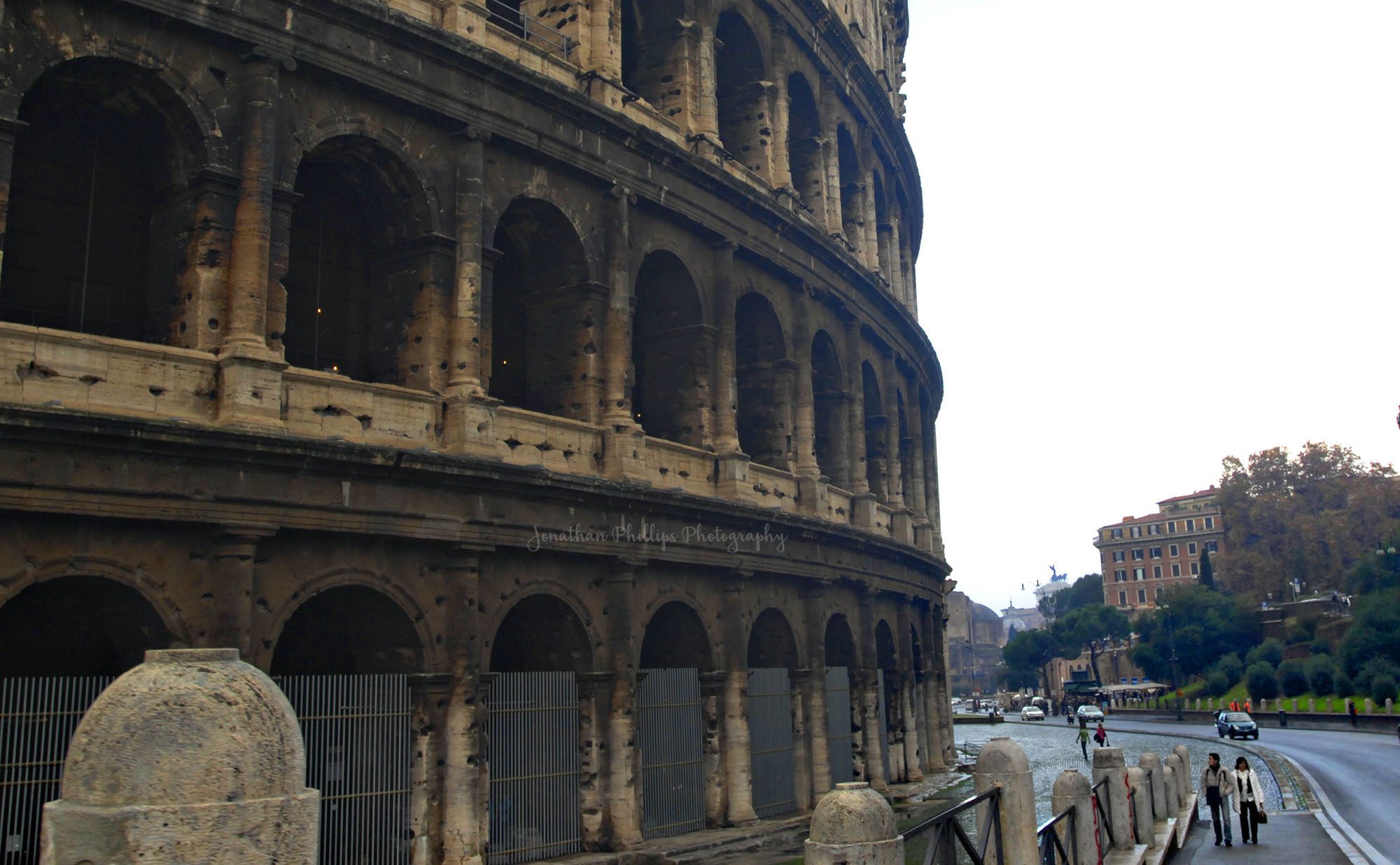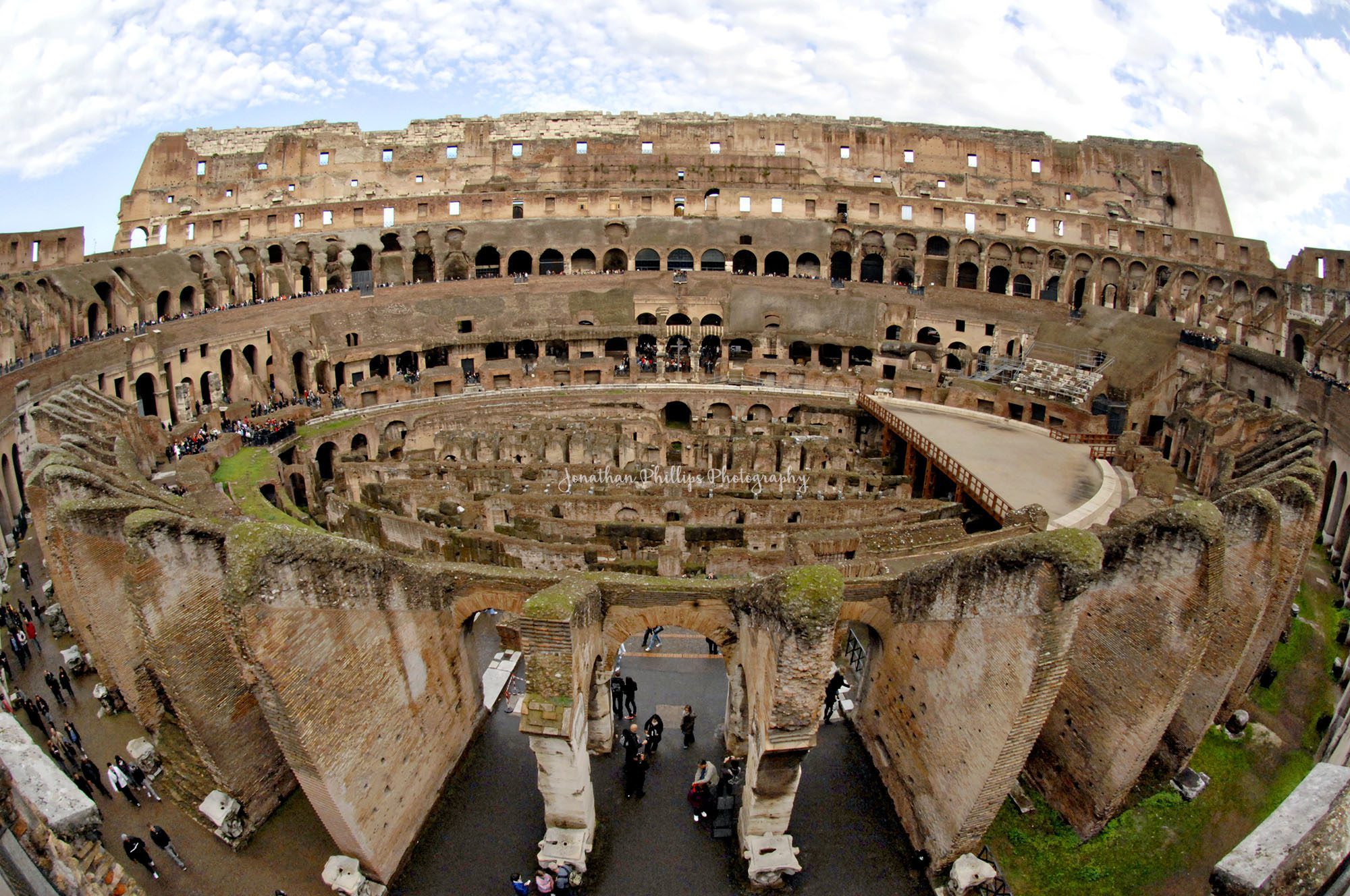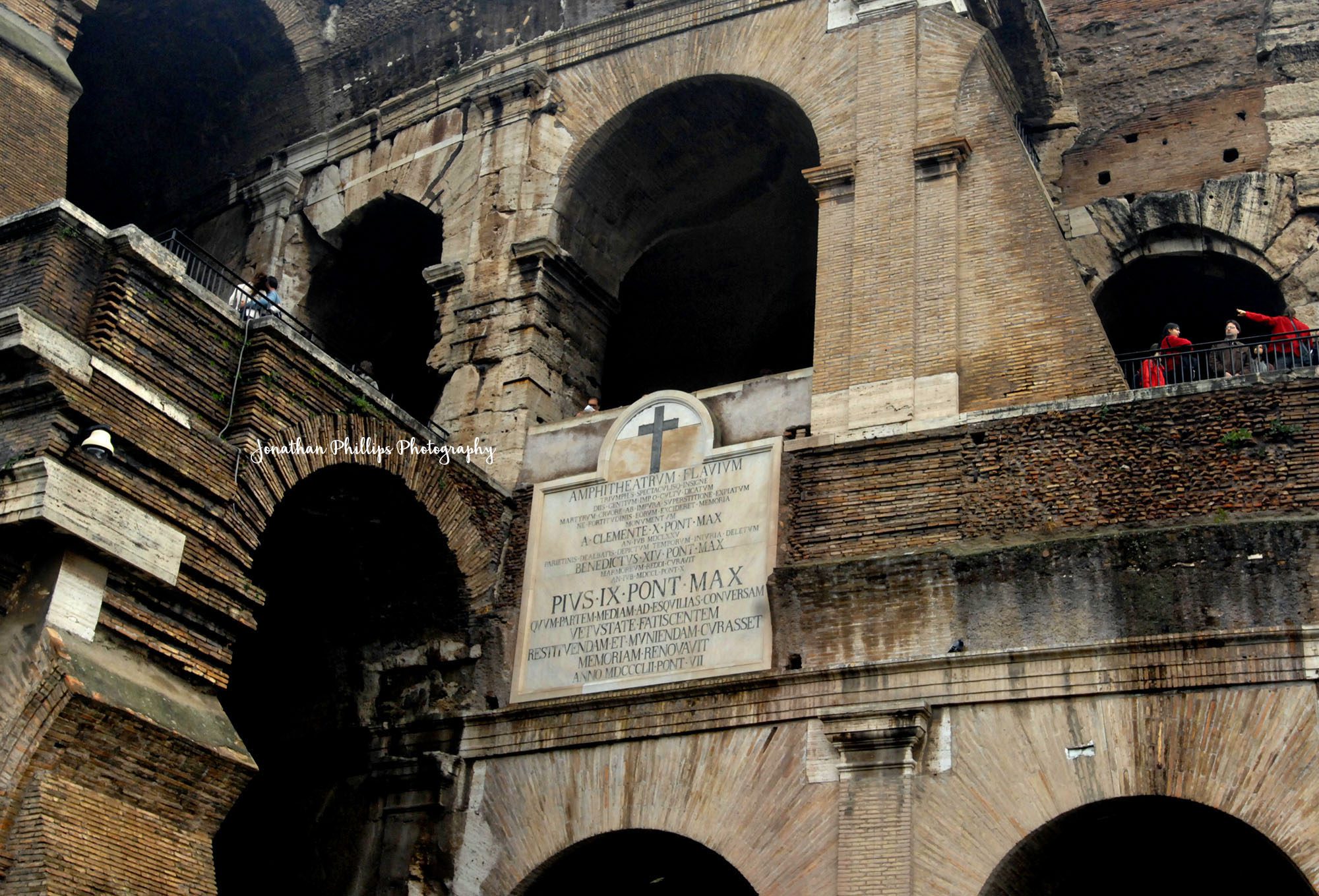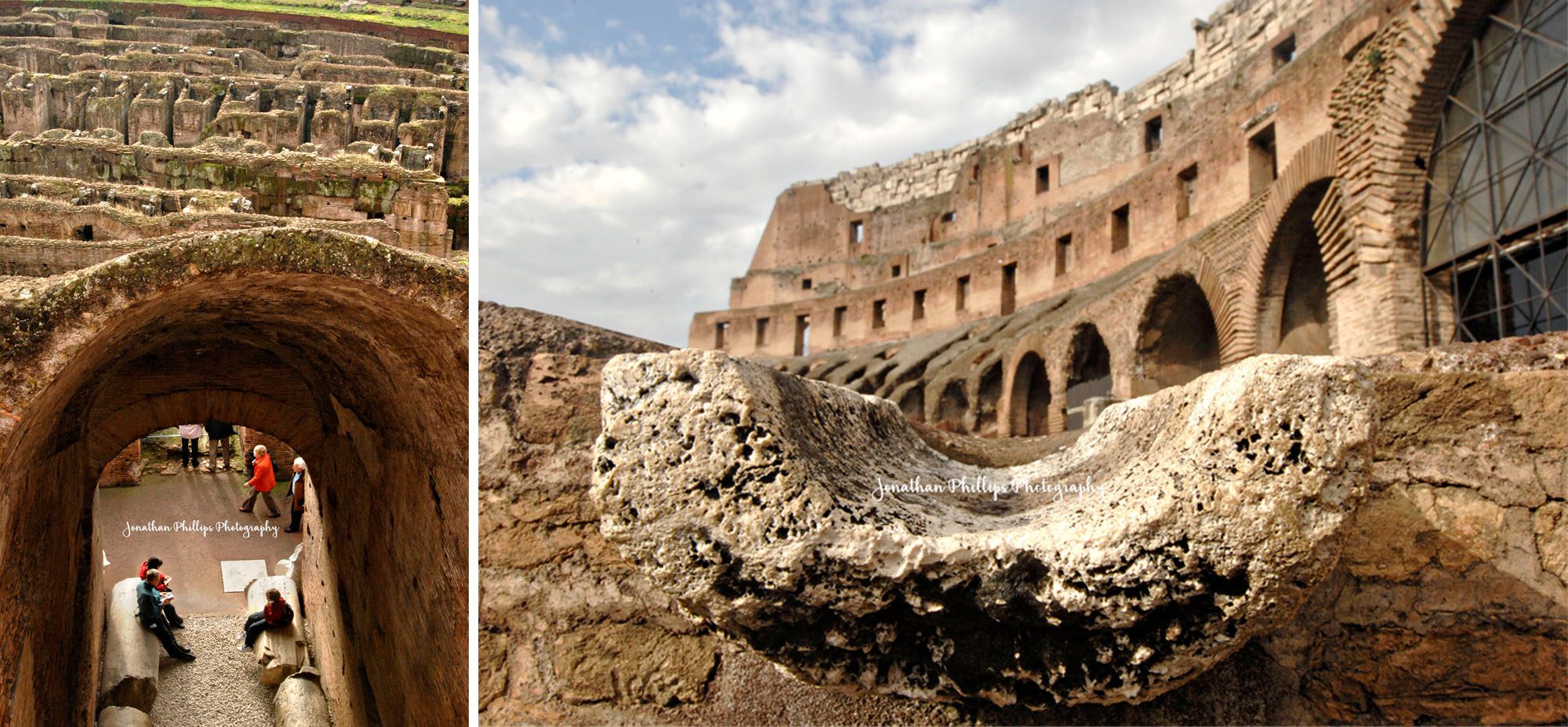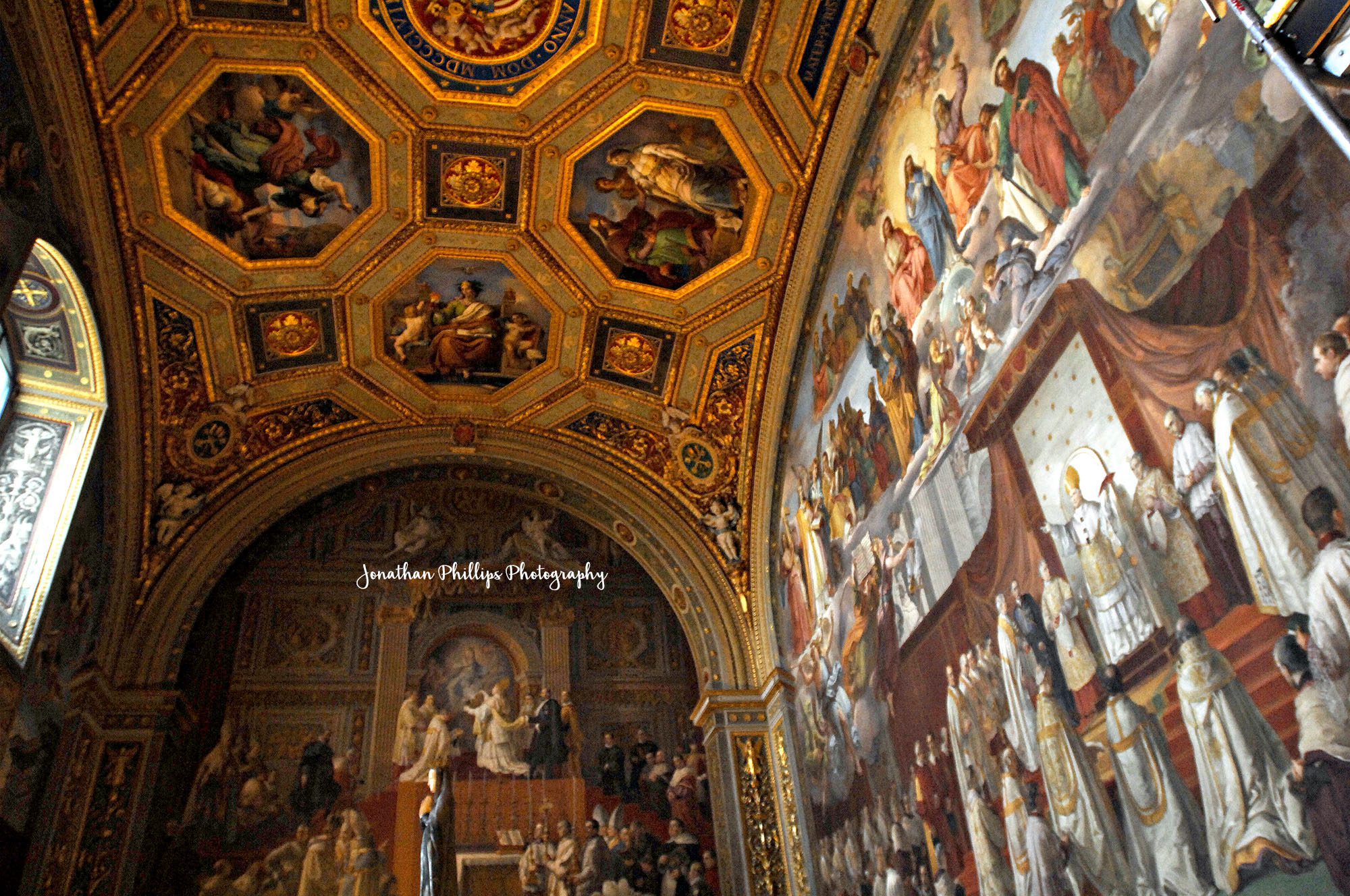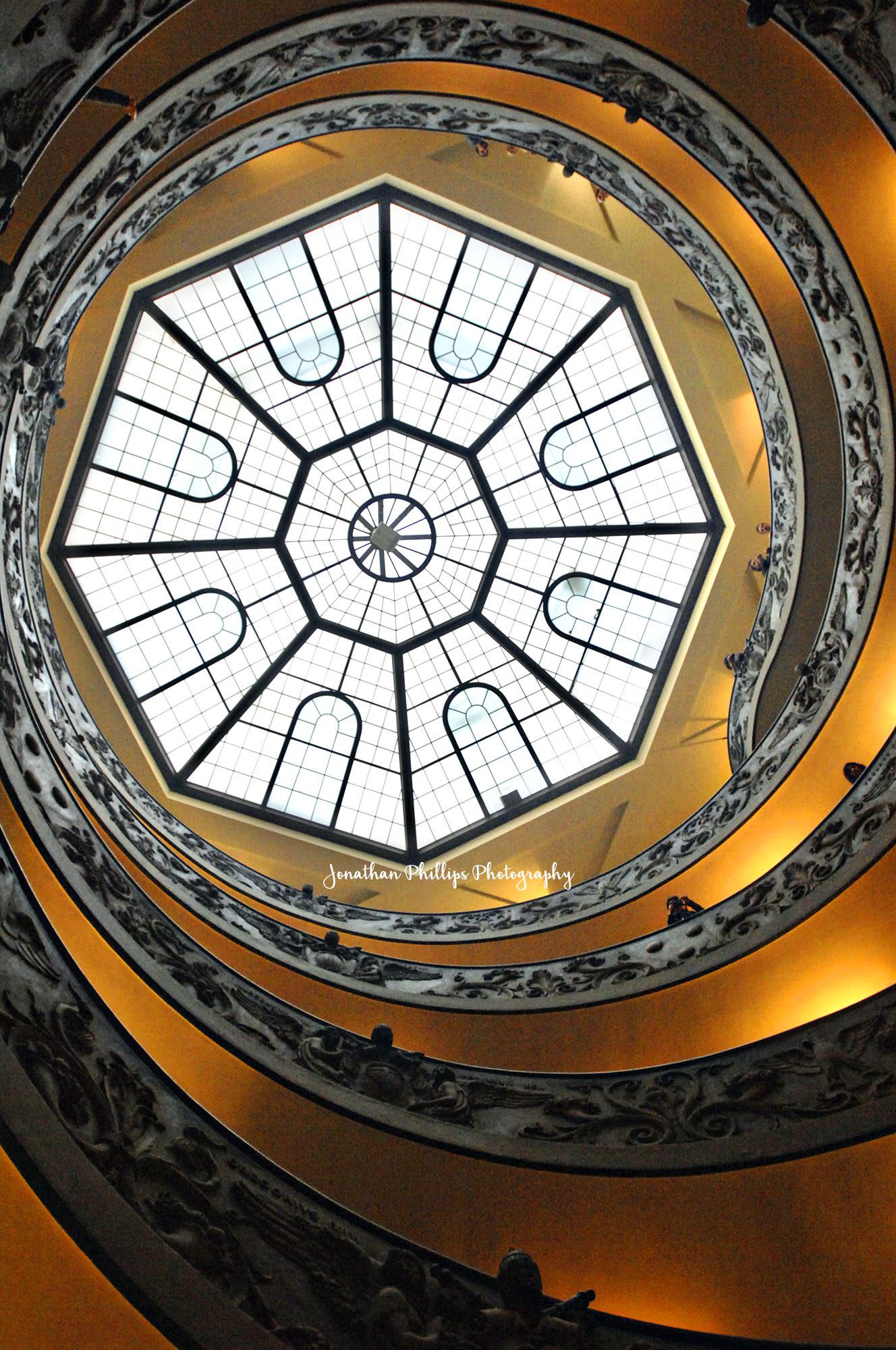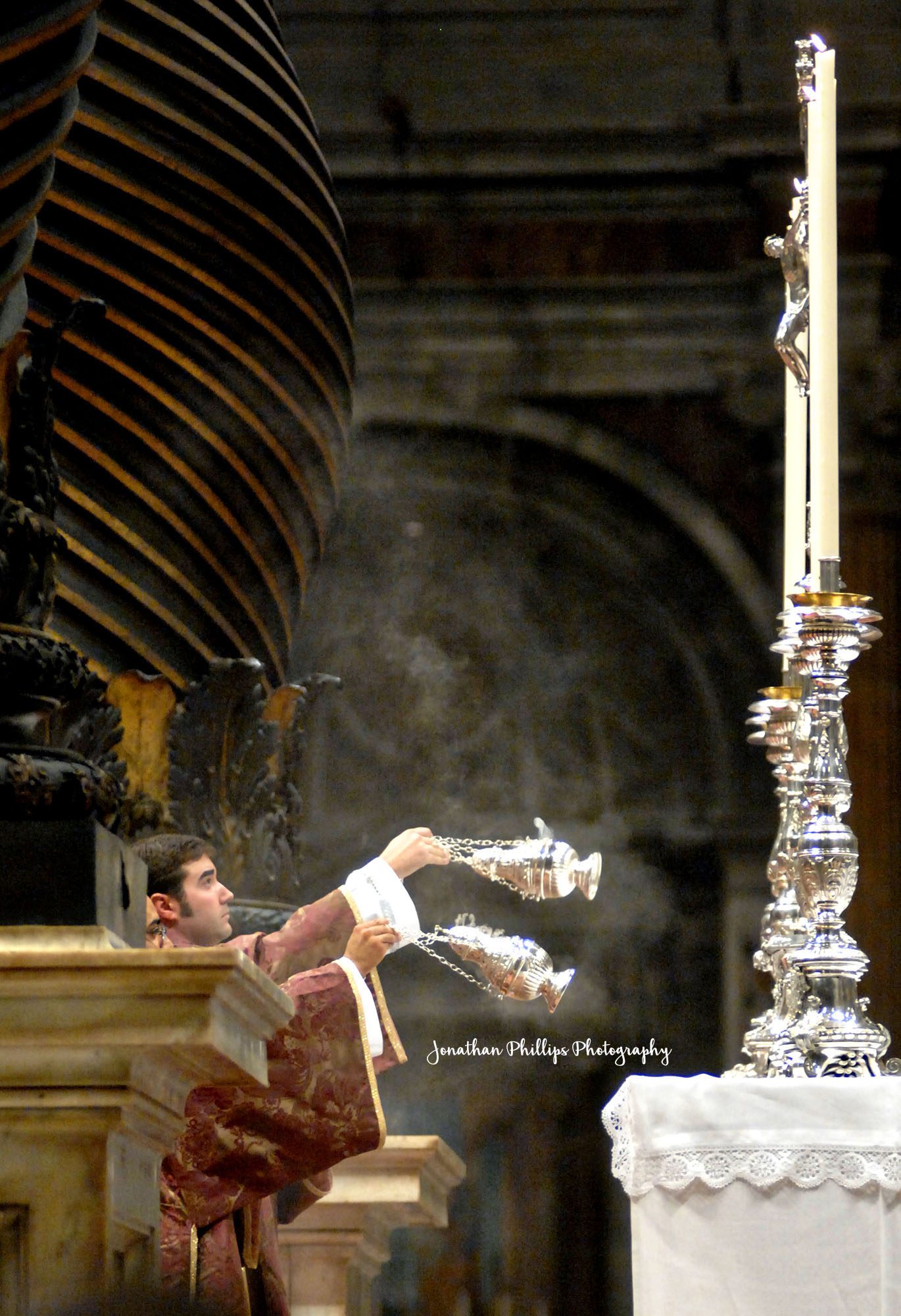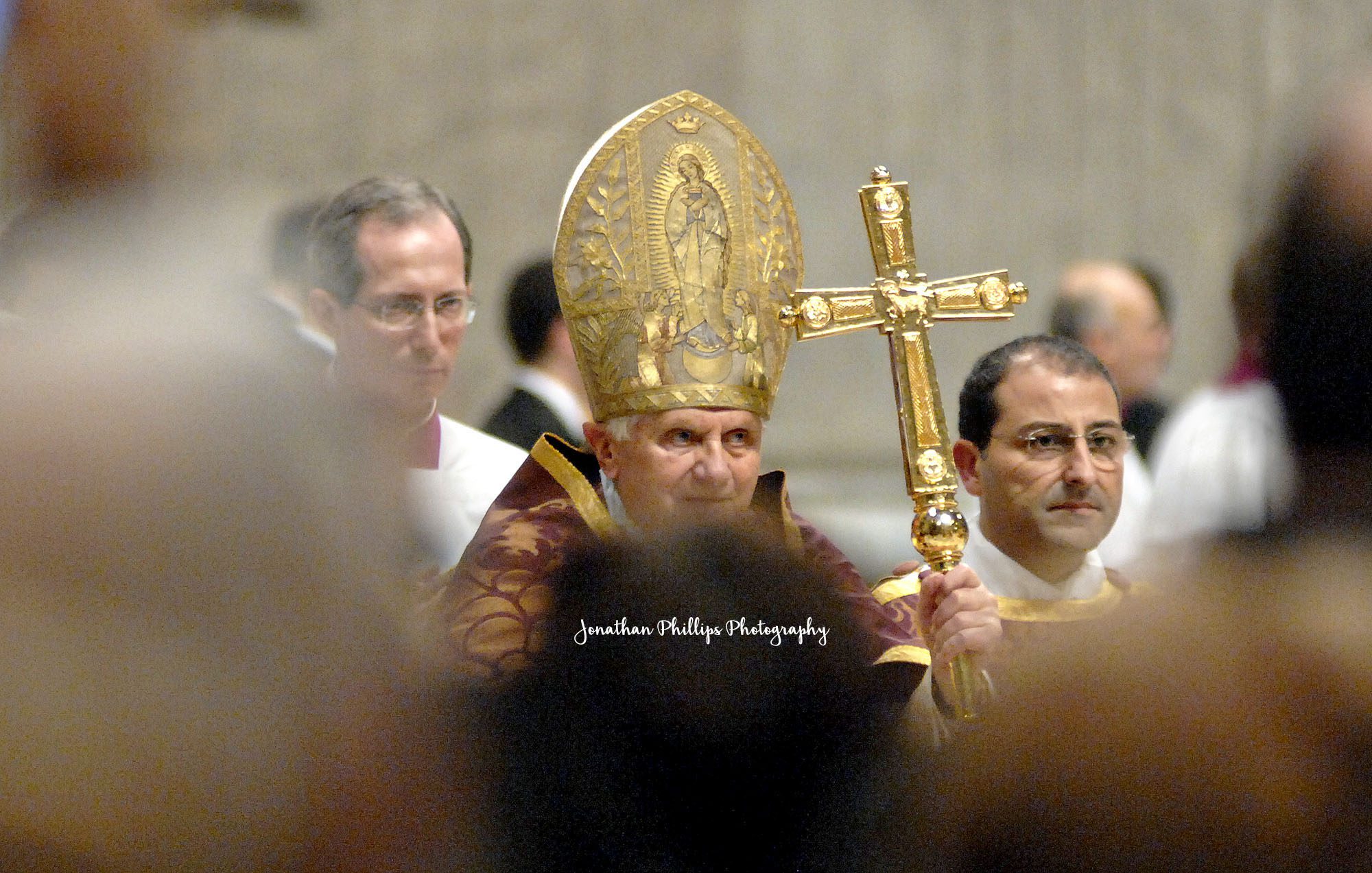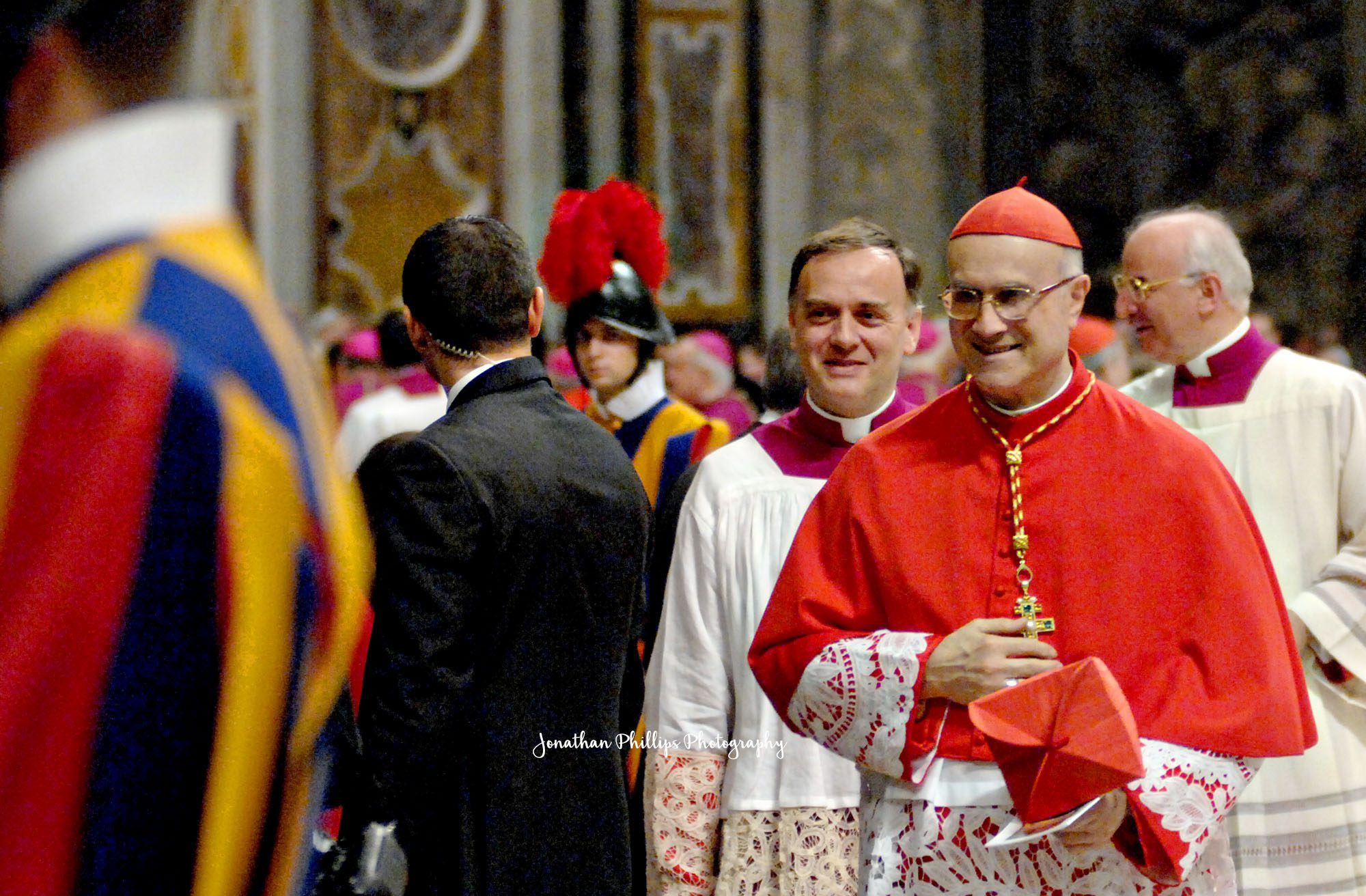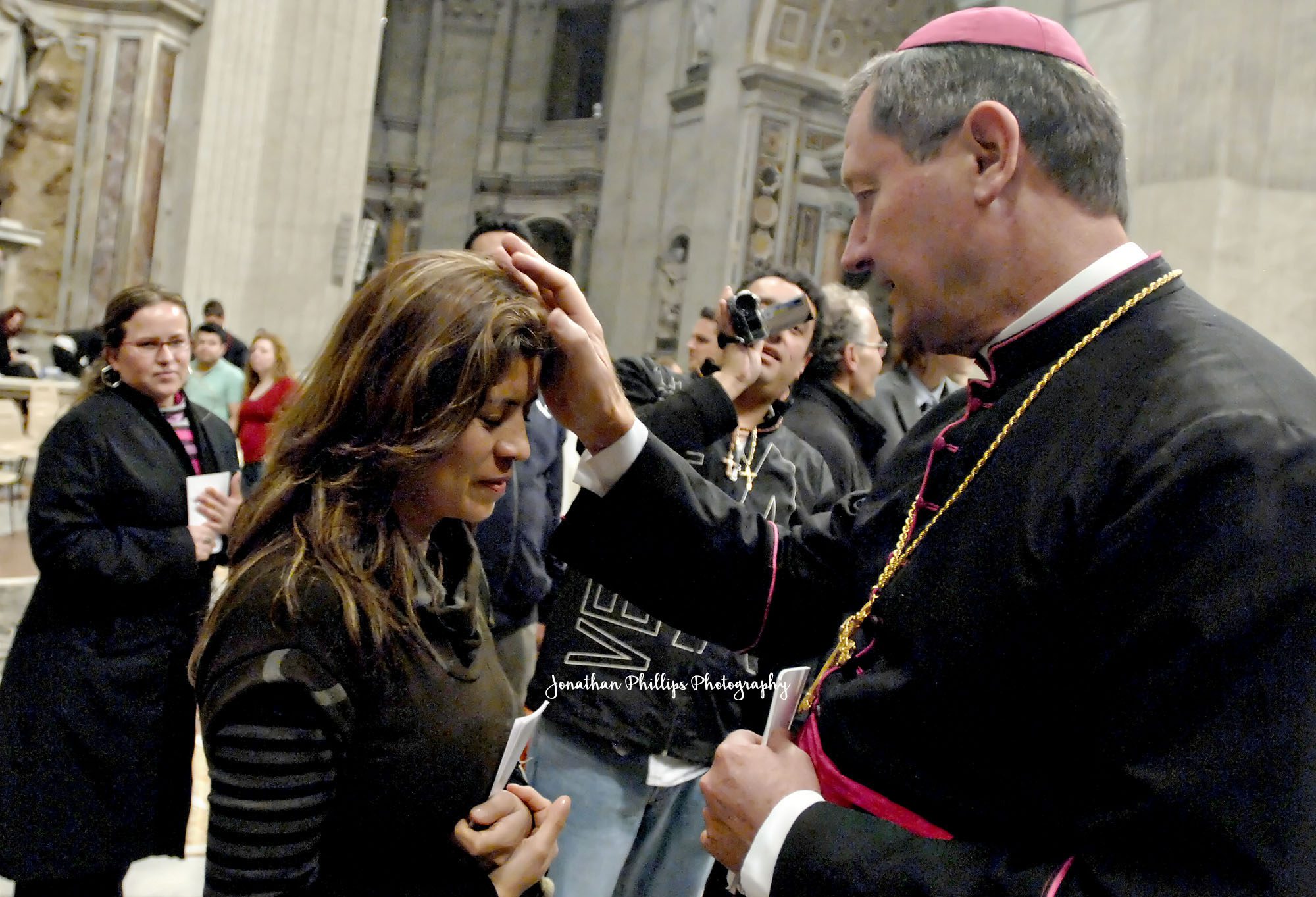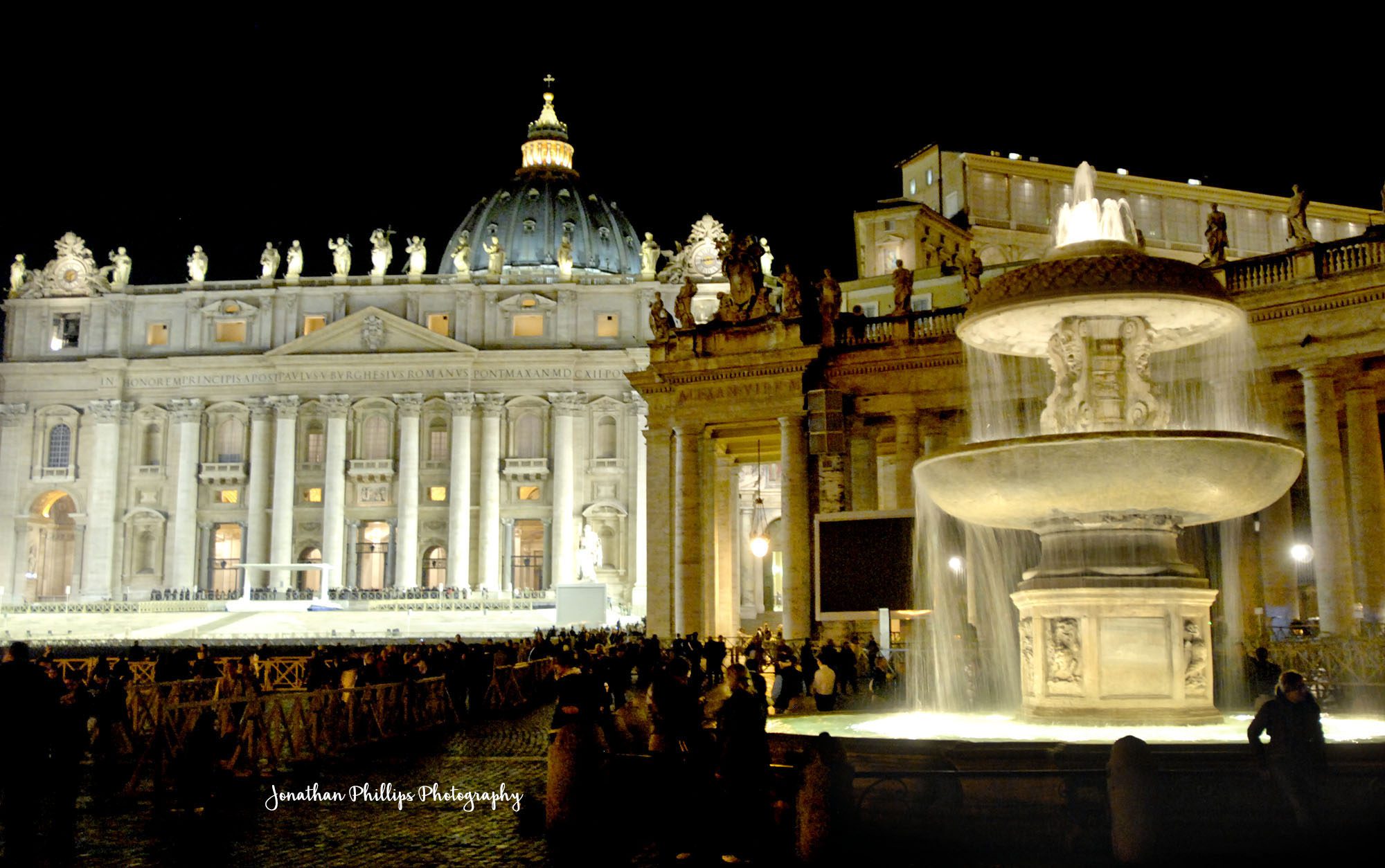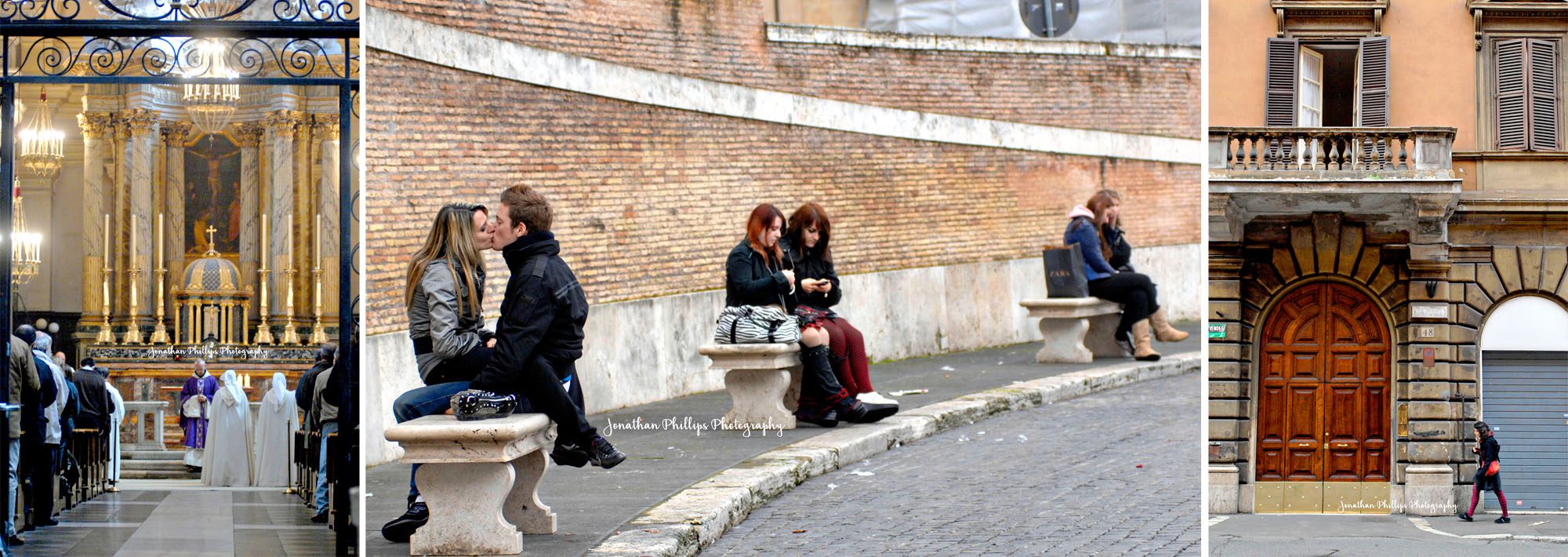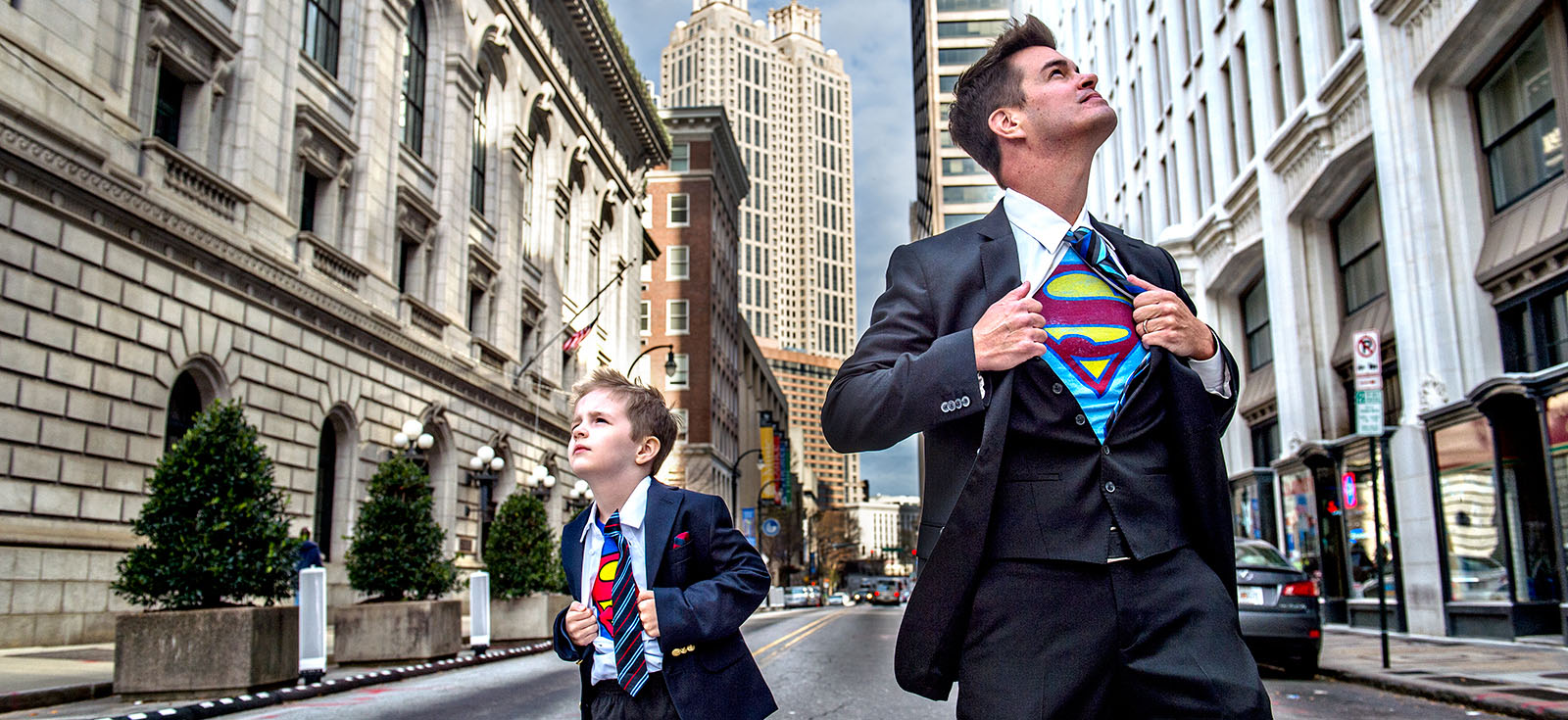What Italy lacks in physical size, the country more than makes up for with the rich and ancient history that permeates the streets of its cities and the people living within them. Ruins of the once great Roman civilization can be found right next to contemporary office buildings and homes. People stop for an afternoon espresso under the shadow of the Colosseum and in Florence, sip on a glass of grappa after an amazing meal, with the Duomo illuminated behind them. The songs of gondoliers echo off the walls of St. Mark’s Basilica in Venice. Remnants of the past are seemingly around every corner.
In 2009 my wife Destiny and I traveled to Italy. We spent three days in Rome, two in Florence, one day in Pisa and three in Venice. Nine days; a whirlwind trip that started with a red eye flight out of Atlanta in late November that had the two of us landing in Rome’s Leonardo da Vinci International Airport where the first part of our adventure begins.
Our luggage was delayed. We fought sleep and jet lag while waiting for it to appear but nevertheless we were beyond excited. Destiny had not yet traveled internationally and it was actually our first trip of this type together as a couple. Our bags finally arrive on the conveyor after two hours of talking and people watching. We head for our hotel, images of the Colosseum, the Vatican and numerous fountains flash past the window in a blur as I stare out at the city. Checked in, with luggage stowed, we hit the streets of Rome.
When you’re tired in Rome what do you do? You walk to the nearest corner café for an espresso. Well, a double espresso, or maybe two of them. With caffeine coursing through our veins and sleep held at bay we explore the streets on the way to the Vatican. Considered the smallest sovereign nation in the world, Vatican City is a 110 acre island surrounded by Rome on all sides.
We, as Americans, don’t have that long of a history, some 241 years, so sometimes it is hard to wrap one’s mind around the concept of time from a historical standpoint. The original basilica, the start of what is considered the Vatican and the birthplace of Catholicism, was first finished in 349 AD. That structure stood for 1,000 years before being rebuilt by the likes of Bramante, Raphael and Michelangelo into the structure that stands, towering above the gates to the city, since 1626. Those types of numbers span generations and I try to contemplate what my great, great, great, great, great grandparents may have been like as we enter the gates.
We’re on a reconnaissance mission. It’s Advent, and each year the pope holds Mass on Saturday evenings for the four weeks leading up to Christmas. Before we left for our trip we had to fax His Holiness. Yes, the pope only uses fax. He does not accept phone calls, text, email, nor carrier pigeons. We had scored tickets that needed to be picked up before the next morning, which happened to be the day of the service we were attending. With bright orange tickets in hand we were free to explore St. Peter’s Basilica.
Wow. It’s a word that we uttered over and over again during our trip. We were often left dumbfounded by the beauty and attention to detail that surrounded us, and during our time in Rome, it all started with those first steps inside this very ornate cathedral. St. Peter’s Basilica is big. It is really big. The church covers almost six acres and the dome, the largest of its kind in the world, rises 448 feet above the plaza outside. Oh, and did I mention, it can seat 60,000 people? The basilica is awe inspiring with detailed reliefs, bronze and stone sculptures and tombs of important clergy members long dead, including Saint Peter, thought to be one of the 12 original disciples from the Bible. We spend the rest of the afternoon inside taking photographs, walking and talking, as we try to take in all of the sights that lay out before us.
If you want to eat like a true Italian you have to have patience and gumption. I say this because after almost 36 hours of straight consciousness and miles upon miles of walking the streets we were starving. A traditional Italian meal consists of three to four courses. Il primo usually consists of some sort of pasta or rice based dish followed by il secondo, a meat or fish. Pair those with a contorno, usually consisting of a salad or some other vegetable, and if you still have room after all of that try your hand at dessert and coffee or a snifter of grappa or Sambuca. That evening was to be the first of many delicious meals that would make my ancestors proud.
To start our second day in Rome we awoke early and headed for the Colosseum. There was already a sizeable crowd gathered at the gates when we arrived. People from all walks of life had come to marvel at one of the most iconic spectacles that the Roman Empire had ever conceived. Like most structures that date back to antiquity, it is hard to describe the scale of this immense amphitheater that was built to entertain the mob of Rome with gladiatorial contests of skill and death. Looking at the stone walls that have stood since the first century AD, I tried to imagine the sound of 65,000 people cheering to the clang of swords, the roar of animals and the screams of pain. Tour guides led throngs of people around the gigantic structure as those who opted out, such as us, weaved our way past them at our own pace.
Afterwards, we walked across the street to the Temple of Venus followed by another walk to the Forum, the heart of ancient Rome. The Forum is a huge plaza that was used for public speeches, trials, elections and commerce. Walls and columns are now all that stands to remind the world that it was there in the first place.
The morning is starting to wane. We trek back to Vatican City and find that we have enough time to tour the museums inside before our date with the pope. I would be lying if I said this was anything less than impressive. Floor to ceiling works of art by Leonardo da Vinci, Bellini, Caravaggio, Raphael and more hang on the walls. Tombstones and sarcophagi from early Christians can be seen as well the red marble papal throne, the Gallery of Maps and sculptures all leading up to the “big show”. The Sistine Chapel and its legendary ceiling is where the clergy of the Vatican meet to pick a new pope. Since it was not in use, we were free to stand in awe and try to take in the vast works of art decorating the roof above our heads. There are numerous famous frescoes but the centerpiece is Michelangelo’s “The Creation of Adam”, which depicts the fingers of God and Adam almost touching taken from the Book of Genesis in the Bible.
We exited the chapel and the museum just in time. People were gathering in the square outside of St. Peter’s. Nuns in their habits and priests in their clerical clothing mix with the growing crowd. We are ushered through the doors and are shown our seats. Then, after what seems like an eternity of waiting, the organ starts to sound and the procession begins. We’re rows back and it is somewhat hard to see. I find a slot between the heads of the people in front of us. Someone shifts and I readjust. This dance continues as the procession nears. I see a cross. Then some of the clergy start to pass. Finally, I catch a glimpse. At first it’s just a flash of gold bouncing above the heads blocking my view. I shift again and there he is, Pope Benedict XVI, walking reverently up the aisle and past us to the papal throne. The service is in Latin, a language I studied in college, so it is familiar. The call and response from the choir and pews echoes throughout cathedral and the incense fills the air with a pungent smell. Even as a non-religious person, the hundreds of years of ceremonious rituals are beautiful to watch. After the service is over, the crowd mingles with archbishops, priests, nuns and other clergy as they leave to enjoy the rest of their evening. Some ask for prayers, others to be blessed. We depart into the cool night air and look for a place to have dinner. Another day is behind us.
Our last day in Rome is filled with journeys to other famous landmarks. We climb the Spanish Steps where I buy my wife a rose. We walk through the Porta del Popolo and spend time walking around the piazza beyond it. We people watch as couples kiss and families climb the large stone lions at the fountain in the center of the plaza to have their picture taken. We stick our heads inside other small churches and shop at tiny market storefronts.
The day goes by quickly and as night takes over we end up at the Trevi Fountain. We spend an hour watching the water cascade off of the marble statues depicting Ocean and his two Tritons riding horses, Abundance holding the horn of plenty and Health wearing a crown of laurel. The fountain is one of the termination points for the aqueducts of old. Like most of the other marvels we have seen, the fountain is ancient and wondrous, yet another “wow” moment. It stands 85 feet high and 160 feet wide. That’s the height of the tree of top of Rockefeller Center during Christmas and the length of half of a football field. We snuggle together against the chill of the evening before walking back to our hotel through the Campo De’ Fiori.
Tomorrow we would travel to Florence by train as our adventure continues…
